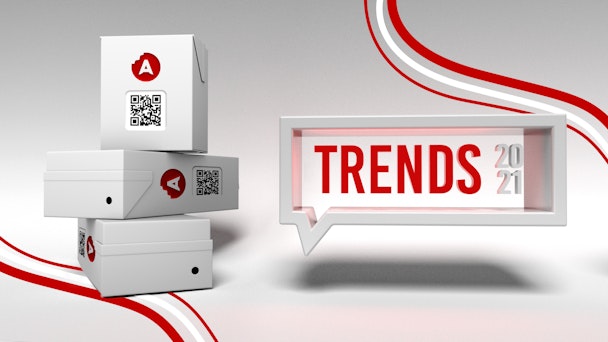What are the new trends in packaging?
Packaging serves multiple functions – protecting and preserving products, differentiating and positioning brands and connecting with consumer values. But what are the new trends in packaging that will impact the marketability of products and enable brands to compete more effectively?

Appetite Creative on new packaging trends and how to design packaging that will attract and connect with a target market
1. Sustainability
People are expressing their concerns about sustainability through changes in lifestyle and product choices. 61% of UK consumers have limited their use of single-use plastic. 34% have chosen brands that have environmentally sustainable values or practices.
Packaging can be a crucial component in brand image, and therefore brands that wish to connect with the values of their customers are switching to sustainable packaging.
What does this mean in practical terms?
There are various new trends in sustainable packaging:
-
Designing for recyclability
-
Less is more
-
Replacements for plastic
-
Biodegradable and compostable
-
Higher quality
With the concept of the circular economy becoming more influential, designing packaging specifically to be recycled is becoming a vital part of the packaging process. Materials include biodegradable plastic, fully-degradable bubble wrap, corn starch, paper and cardboard.
More brands and manufacturers are reducing the amount of packaging for packaging’s sake. Less is more when it comes to displaying your sustainable credentials.
Plastics are very much public enemy number one when it comes to the environment, and the trend for sustainable substitutes is gaining pace. Until recently, many biodegradable plastics, such as polycaprolactone (PCL), had high manufacturing costs. However, blending PCL with corn starch brings down production costs, making it a viable alternative to plastic.
More and more everyday consumable products are in biodegradable packaging, such as bottled water.
Another new development in sustainable packaging is finding its way on to high-quality products from premium brands. These brands include PVH, the parent company of Tommy Hilfiger, and the luxury brands retailer MatchesFashion.
2. QR codes
One legacy of the Covid-19 pandemic is that it has made the QR code very much a feature of people’s lives through track and trace. Using a QR code on packaging is an excellent and efficient way of providing additional information. It is the perfect vehicle for innovative packaging. As a portal to online information, the QR code offers unlimited potential to companies looking to use their packaging as a vehicle for communicating their brand values.
3. Interactive packaging
Interactive packaging isn’t as high-tech as it sounds. Using QR codes, brands can direct consumers to links that include helpful tips about products or how-to videos.
This connected packaging serves a dual purpose:
-
It gives consumers added value and helps build trust with the brand
-
It cuts down on packaging elements such as instruction manuals and guides
We’re now in the age of smart manufacturing and the internet of things (IoT). Interactivity and connectivity come as standard for many new products. It therefore makes sense for packaging to follow suit.
4. Free samples
If you go and see a film, you’ll see trailers of forthcoming releases before the main feature. This principle now applies to packaging too. What some brands are doing is including free samples with the packaging of their products.
For example, a food manufacturer could package samples of other products in a range with their products. Or they might include samples of a product that complements the main product.
5. Packaging as art
Certain retail areas, such as fashion, have long understood the value of well-designed packaging. Think of the distinctive packaging for Jean Paul Gaultier fragrances, for example.
Using art in packaging now applies to a broad range of products, becoming an essential branding element. Illustration is playing a prominent part in packaging trends. It can combine striking visuals with storytelling techniques.
Transforming packaging into art adds value to a product, making it both more intriguing and more desirable.
How to make your packaging relevant
These various packaging trends aren’t mutually exclusive. You can combine sustainability with artistic flair, or use connected packaging on biodegradable materials.
It’s also worth noting that many of these trends reflect profound shifts in society and people’s attitudes to products and what it means to be a modern consumer. Brands must consider their packaging options if they want to connect with these consumers. Want to learn more? Why not read our other article on Understanding smart packaging.
Contact Appetite Creative to find out how we can help you design the packaging that will attract and connect with your target market.
Jenny Stanley, managing director at Appetite Creative.
Content by The Drum Network member:

Appetite Creative
The Connected Experiences Studio - We connect your Brand with Today's Audiences!
We are a multi-award-winning creative technology studio with a passion to...

